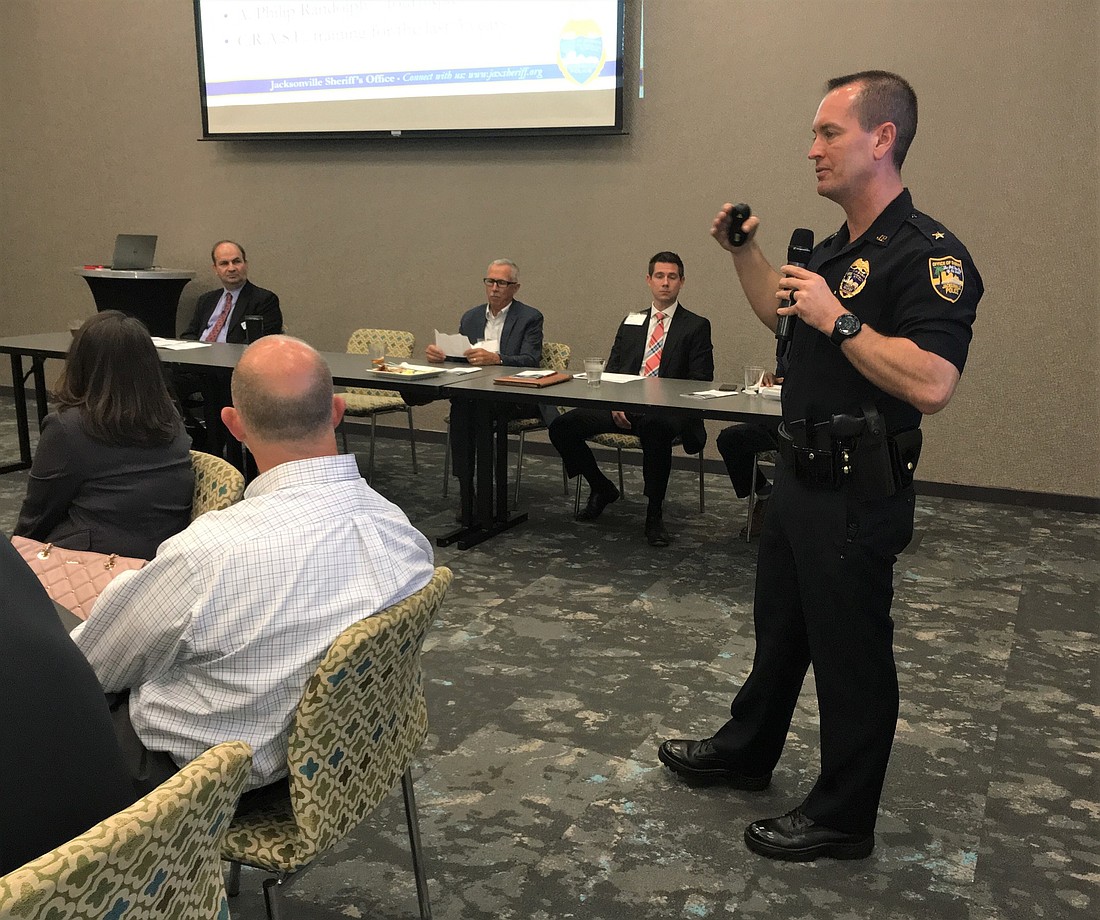
Medical facilities are vulnerable to mass shootings and Northeast Florida hospital administrators are trying to protect against that.
Designing security measures to protect patients, staff and visitors was discussed at the “Safety and Security in Healthcare: Active Shooter Preparedness” seminar April 17.
The program was presented by SMPS North Florida, a marketing and business development organization that focuses on architects, engineers and contractors.
The four panelists were Jackson Short, the assistant chief of special operations at the Jacksonville Sheriff’s Office; Donald Crist, vice president of support services for Flagler Health +; Kyle Dorsey, vice president of operations for Baptist Medical Center Jacksonville and Wolfson Children’s Hospital; and William Valree, director of security operations for UF Health.
They agreed that it’s difficult to prevent or respond to mass shootings in health care settings, which have dozens of entrances, hundreds of vulnerable patients, and employees who are trained to run to, not from, emergencies.
“It’s not what’s ingrained in our heads in health care,” Dorsey said.
There were about 200 mass shootings between 2000 and 2015, seven of them in medical facilities, Short said.
“It’s scary, but it’s where we are today,” Crist responded.
Short emphasized that everyone needs to take personal responsibility for their safety in active shooter situations.
“If you see something suspicious, you should report it,” he said. “If your hair stands up on the back of your neck, that’s a clue.”
Short recommended the “whole community” approach taken by NFPA 3000, a standard from the National Fire Protection Association for unified planning and recovery.
It encourages the community to not only stop the shooting, but to stop the dying. Civilians have saved numerous lives with tourniquets and chest seals during recent attacks, Short said.
Be observant and orient yourself to your surroundings and the exits, he said. Ask yourself, what would you do if you were in this situation? Then decide and act.
When pressed about his position on guns in the workplace, Short hesitated. He emphasized that if he were speaking personally, and not for JSO, he would say that “the only way to stop a bad guy with a gun is a good guy with a gun.”
Here are some actions the speakers said they’re taking to make their facilities safer:
Short recommended CRASE (civilian response to active shooter events), a free training program offered by JSO. It provides strategies and guidance for schools, businesses and places of worship.
Valree suggested products, tools and resources available from the Department of Homeland Security. For more information, visit dhs.gov/cisa/active-shooter-preparedness.